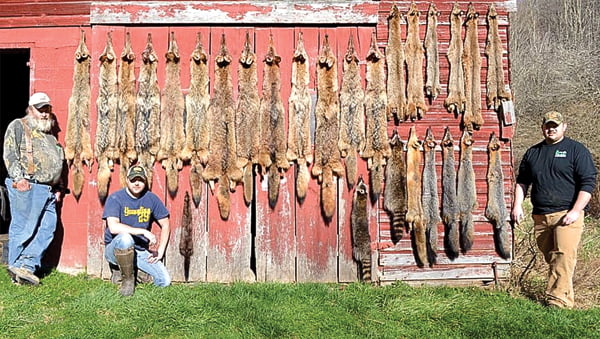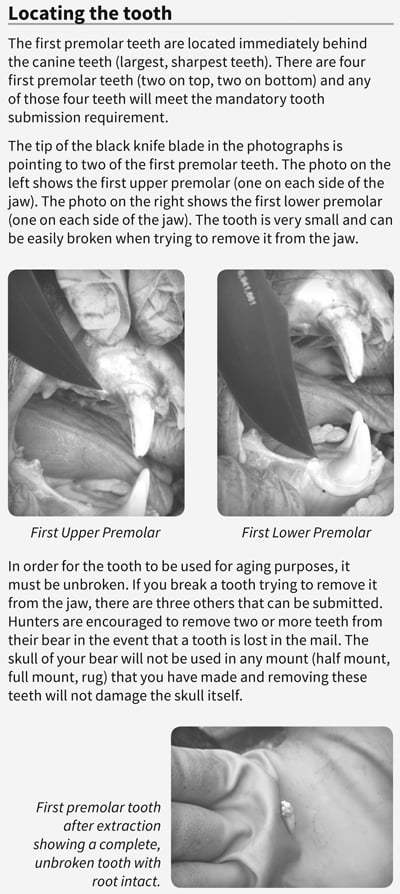
Suzanne Stewart
Staff Writer
Photographs have more than just the ability to capture a moment in time. They can evoke memories and emotions, as well as inspire viewers to follow a certain path.
For Dry Branch native Kenny Woods, a photograph of his father, Charles, surrounded by furs of animals he trapped, inspired him to take on the trade of trapping.
“My dad used to trap, and he had this picture of him sitting on the fireplace with all his furs hanging behind him,” Wood said. “I always thought that was cool.”
Under the watchful eye of his dad, Woods learned the ins and outs of trapping as a teenager but didn’t really focus on trapping until a few years ago.
“I learned pretty much everything from dad, and then took what I learned from him and started going to conventions and picked up a lot of things there,” he said.
“I’m a deer hunter first, and I feel like the coyotes affected the population of deer, turkeys and other game, so I wanted to contribute to the control of the population of coyotes.”
Each season – November to February – Woods sets anywhere from two-to-five dozen traps on his land and checks them daily with the help of his dad and his friend, Jamie Kellison. Part of the draw of trapping for Woods is getting to spend time in the woods with these fellow trappers.

“[I enjoy] the camaraderie of it because my dad goes with me and checks half of the line,” he said. “Jamie Kellison and I check everything over here. We work on all of it together – from getting the traps ready through the trapping portion of it.”
Prior to the season, Woods and his pals get everything ready for the season. A lot goes into that preparation, including treating the traps to be ready for all weather conditions.
“You don’t just get up the first day of trapping season and go trap,” he said. “I boil the traps in a solution of bark and water – and that takes off any contaminants. That’s where the black color comes from that you see on traps. Then, I wax them, which seals the metal to keep it from rusting, and cuts down on the scent. That starts before trapping season ever comes in.”
While his focus is on coyotes, Woods also traps bobcats, foxes and raccoons.
“You can set traps with a focus,” Woods explained. “You can set them with an attempt to catch what you want by using certain things that lure a coyote more than a bobcat or a bobcat more than a fox. There are some lures that draw their interest more because they’re based on scent, so you might set something that draws a coyote’s attention more than it does a bobcat. Or there are some sets – just the way you set the trap – you know it’s going to draw the attention of a curious bobcat.”
Trapping is a vigorous sport which requires early mornings and late nights. Each morning during the season, Woods checks his traps before work and if there is anything in the trap, he spends the evening preparing the furs.
Woods saves his furs until the end of the season and sells them to the same man his father sold to years ago. The furs are largely exported and used in clothing in other countries. Much like other products, the price of furs fluctuates depending on the market.
“The price of your fur depends on how well the American dollar compares to the foreign dollar –as well as need and or interest in fur as a style,” he said. “Fur prices fluctuate, but none of the prices are what they were in the seventies. Back then, there was a profit to be made and these days, it’s more you’re doing it because you want to do it, not because you’re going to make money.”
Woods said money was never the draw for him. He enjoys the trade, camaraderie and spending time in the woods.
“I feel like I see more rabbits around where I trap,” he said. “It may have just been the give and take of nature, but I feel like I’ve made some difference where I trap.”
When asked what he will do if there ever comes a time that coyotes have thinned out completely, Woods said that probably won’t be an issue.
He noted that he had read several articles on the subject. Those articles state that coyotes are thought to increase in population due to increasing litter size and pregnancy rates in survivors as a result of trapping and hunting pressure. So, any shortage would more likely come from disease, rather than from trapping.
Trapping is more than just a pastime for Woods. He studies up on ways to trap, products to use and travels to conventions to learn from other trappers.
He receives a catalog from Minnesota Trapline Products which features photos of its customers every year. Last year, Woods submitted a photo which was printed in the catalog. The photo of him, his dad and Kellison with all the furs from the season was the largest photo featured in that edition.
“We were proud because it was the largest photo,” Woods said, smiling. “They had a lot of photos, and ours was the largest. I sent it in to them because everything that was trapped probably some part of the product used was from them in one way or another.
“I was pretty proud of my picture because, like I said, a picture is what kind of got me started into it,” he continued. “So my thing was always to recreate that picture and to have those memories to look back on myself.”
At the end of the day, Woods is focused more on the enjoyment of trapping and not the numbers.
“My numbers aren’t as impressive as I’d like them to be,” he admits. “But that means I have room to improve.
“Trapping – it’s definitely because I get to be in the woods every day.”



